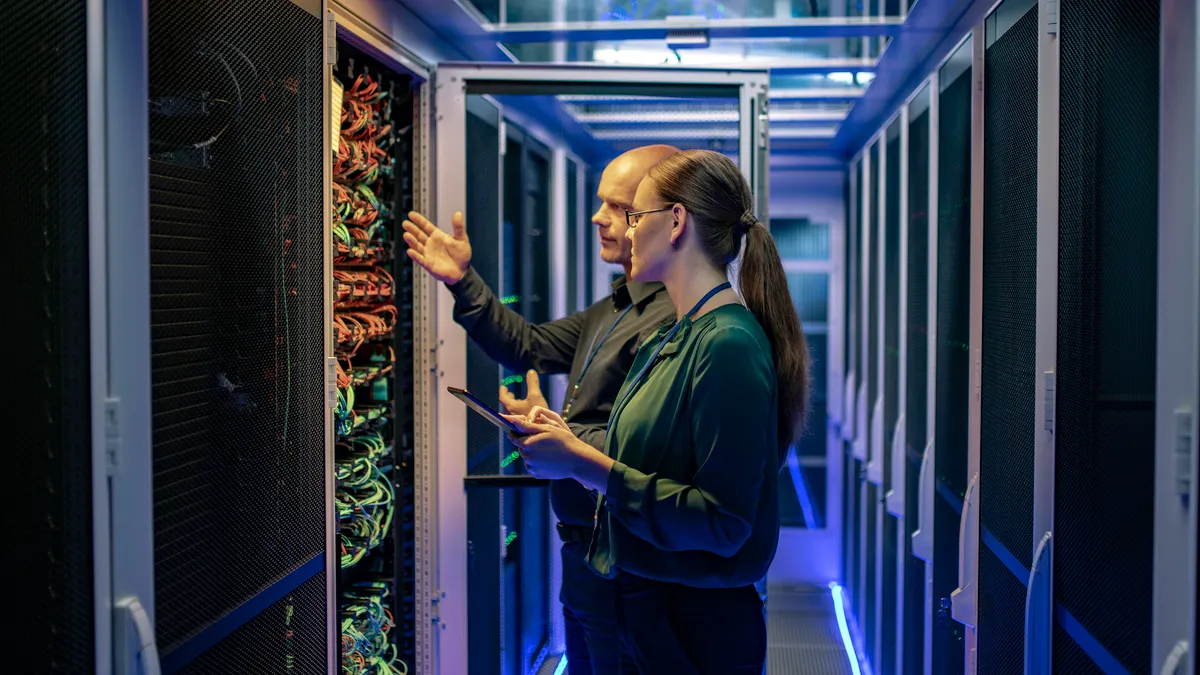Companies may be speeding down the modernization highway at full throttle, but somewhere under the enterprise hood there’s almost always a trusty mainframe, powering backend applications, lending on-prem power to digital transformation.
Tech executives expect half of legacy applications to be modernized in the next two years, according to an Infosys survey of 1,500 senior tech leaders released earlier this year.
The survey found 88% of systems are legacy and 45% reside on legacy mainframes.
There’s no question that cloud is on the rise. It’s got a lot of growing room in the IT ecosphere. But mainframes are standing firm.
“The on-prem world isn’t going away — it’s not even getting smaller,” said John Lovelock, distinguished VP analyst at Gartner. “There’s still enough money going into non-cloud software and on-prem systems networking equipment to keep this up and growing.”
Conventional wisdom depicts cloud as the engine of innovation, eroding mainframe’s workhorse reputation with promises of agility, optimization, AI and DevOps. Despite the associated challenges in procuring talent or modernizing, the mainframe remains a stubborn — and critical — component of enterprise IT.
Mainframe modernization
Mainframe computing hasn’t just been running in place — it, too, has been modernizing.
Nearly two-thirds of organizations report the combined use of AIOps in their mainframe and distributed environments, according to an October report by BMC.
Seven in 10 use DevOps within their mainframe environments, based on the software company’s annual report, which surveyed more than 1,000 executives and technical professionals.
Almost all respondents said they have a positive perception of the mainframe and consider it a “long-term platform that is growing and adding new workloads.”
“Whether you're in IT business or outside of the actual business, you don't think about the mainframe, and that's because it’s part of the infrastructure fabric that helps us live every day,” John McKenny, SVP and general manager of intelligent Z optimization and transformation at BMC, said in an interview with CIO Dive.
“Some people in the mainframe space won't like hearing me say this, but it's a little bit like plumbing or your water and power — when it's working, you take it for granted, you just don't think about it,” McKenny said. “As one customer told me, if the backend sneezes, everything else catches the flu."
Finding a good plumber can be difficult. Recruiting technologists may be even harder in the current tech labor market, even in the wake of tech sector layoffs and hiring freezes.
Mainframe talent may be even harder to find.
Concern over access to the right talent to properly maintain legacy systems was listed as a major concern by three-quarters of more than 400 companies surveyed for an October report by IT services provider Advanced. Nearly half said their pool of mainframe-capable talent is decreasing.
“This is a platform where a large number of the employees were getting close to or [were] at retirement age several years ago,” McKenny said.
New sources of talent are emerging, according to McKenny, and workforce demographics are shifting too. The percentage of workers between the ages of 18 and 29 has increased, while those over 50 have a smaller share of the pie, according to BMC’s survey.
Women now make up 30% of mainframe workers, a 7% increase year over year.
“There's been a significant increase in the number of earlier career people that have 10 years or less experience,” McKenny said. “And we've seen the number of women in the workforce increase as well, which is positive for the platform.”
The hybrid way
Framed as a straightforward tale of two systems, the Great Cloud Migration is really a Goldilocks story, with companies choosing a best-of-both-worlds integration of cloud and mainframe.
“Most of the deployments that you see out there are hybrid deployments,” Harish Grama, global cloud practice leader at cloud integration software company Kyndryl, told CIO Dive. “Companies have public cloud in the mix, along with an on-prem footprint.”
MSPs like Kyndryl, which cemented a partnership with Microsoft’s cloud division in October, and its former parent company IBM are banking on a hybrid future, according to Steven Dickens, senior analyst at Futurum Research.
Security is one reason enterprises favor on-prem for sensitive workloads, McKenny said. Two-thirds of mainframe organizations listed security and compliance as top priorities, according to BMC’s survey.
Yet, a large part of on-prem’s persistence can be attributed to simple staying power. Large companies that weren’t born in the cloud have relied on mainframe infrastructure for years.
For companies in banking and finance, insurance, manufacturing and retail, running workloads on prem — especially backend applications — remains central to IT operations.
Liberty Mutual’s modernization journey is a case in point.
The sixth largest casualty and property insurer in the U.S. has moved nearly three-quarters of its workloads to the cloud in the last decade and closed one of its data centers. But the company expects to maintain on-prem for the foreseeable future, according to Angela “AJ” Wasserman, product owner of cloud financial operations at Liberty Mutual.
“On-prem is still part of our technology infrastructure,” Wasserman told CIO Dive. “We are looking to close additional data centers, but we’ll always have certain workloads on physical servers. It’s always going to be a part of what we do.”




















